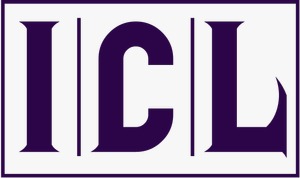Relationship between Multiple Intelligence and Learning Process of English Learners
Keywords:
Multiple Intelligence, Language learning, lesson planAbstract
Howard Gardner suggests that there are seven potential intelligences. This research paper aims to illustrate the relationship between multiple intelligences and learning process of English language. It further tells us how language aspects are learnt by using specific activities of different intelligences. In this research article, the researchers have used qualitative methods with practical activities to keenly observe student's language progress. The researchers have included activities in prepared lessons and each activity on intelligence was modelled on the essential characteristics of a particular type of intelligence. Multiple intelligence approach deviates the traditional method of teaching. This theory considers the GTM as an outdated method of educational system because it does not address the required needs, desires and interests of the students of modern era.
Downloads
References
Ahmadian, M., & Hosseini, S. (2012). A study of the relationship between Iranian EFL learners’ multiple intelligences and their performance on writing. Mediterranean Journal of Social Sciences, 3(1), 111–126. https://doi.org/10.5901/mjss.2012.03.01.111
Ahour, T., & Abdi, M. (2015). The Relationship between EFL Learners’ Multiple Intelligences and Vocabulary Learning Strategies Use with a Focus on Gender. Theory and Practice in Language Studies, 5(4), 800. https://doi.org/10.17507/tpls.0504.16
Arulselvi, E. (2018). Incorporating Multiple Intelligences in the English Classroom. The Excellence in Education Journal, 7(2), 101–121. https://files.eric.ed.gov/fulltext/EJ1208657.pdf%0Ahttps://eric.ed.gov/?q=multiple+intelligences&ft=on&id=EJ1208657
Bhatti, A. M., Abbas, F., & Rana, A. M. K. (2020). An empirical study of learning styles used by undergraduate English learners in public sector colleges in Pakistan. Elementary Education Online, 19(3), 1864-1875. https://doi.org/10.17051/ilkonline.2020.735342
Brown, H. D. (2000). Principles of language learning and teaching (Vol. 4). New York: Longman.
Davoudi, M., & Chavosh, M. (2016). The Relationship between Multiple Intelligences and Listening Self-Efficacy among Iranian EFL Learners. English Language Teaching, 9(6), 199. https://doi.org/10.5539/elt.v9n6p199
Derakhshan, A., & Faribi, M. (2015). Multiple Intelligences: Language Learning and Teaching. International Journal of English Linguistics, 5(4). https://doi.org/10.5539/ijel.v5n4p63
Gardner, H. E. (1983). Frames of mind: The theory of multiple intelligences. Basic books.
Hajhashemi, K., Ghombavani, F., & Amirkhiz, S. (2011). The Relationship between Iranian EFL High School Students’ Multiple Intelligence Scores and their Use of Learning Strategies. English Language Teaching, 4(3), 214–222. https://doi.org/10.5539/elt.v4n3p214
Hajhashemi, K., Shakarami, A., Anderson, N., Yazdi-Amirkhiz, S. Y., & Zou, W. (2013). Relations between Language Learning Strategies, Language Proficiency and Multiple Intelligences. Academic Research International , 4(6), 418–429.
http://www.savap.org.pk/journals/ARInt./Vol.4(6)/2013(4.6-45).pdf
Hanafiyeh, M. (2013). the Relationship Between Iranian Efl Learners’ Multiple Intelligence and Success in Foreign Language Learning. Asian Journal of Management Sciences & Education, 2(1), 97–105. https://www.semanticscholar.org/paper/4b92d712f5019b897a8b64768975887b180d32f8
Ma’mun, N. (2019). The Use of Multiple Intelligence Approach in The Teaching of English for Young Learner. Teflin 2: From Policy to Classroom, 060, 132–138.
Şener, S., & Çokçalışkan, A. (2018). An Investigation between Multiple Intelligences and Learning Styles. Journal of Education and Training Studies, 6(2), 125. https://doi.org/10.11114/jets.v6i2.2643
Sogutlu, E. (2018). Multiple Intelligences and Foreign Language Learning: Possible Relationship. September 2018. https://doi.org/10.33422/3hsconf.2018.09.01
Montessori, M. (2013). The montessori method. Transaction publishers.
Gay, G. (2018). Culturally responsive teaching: Theory, research, and practice. teachers college press. Good, T. L., & Lavigne, A. L. (2017). Looking in classrooms. Routledge.
Tomlinson, C. A. (2001). How to differentiate instruction in mixed-ability classrooms. Ascd.
Downloads
Published
How to Cite
Issue
Section
License

This work is licensed under a Creative Commons Attribution-NonCommercial-NoDerivatives 4.0 International License.


